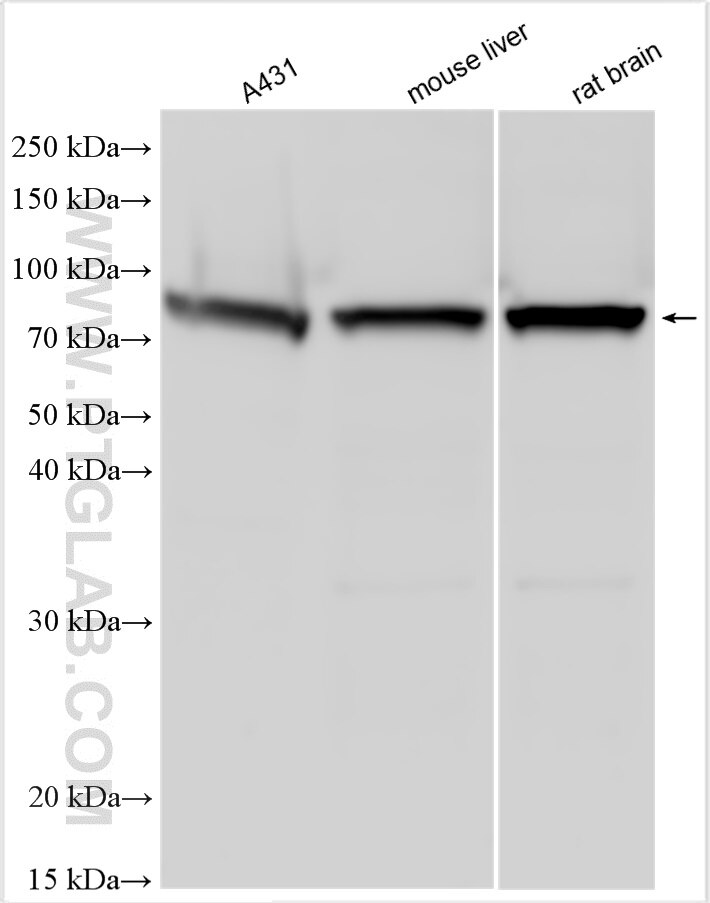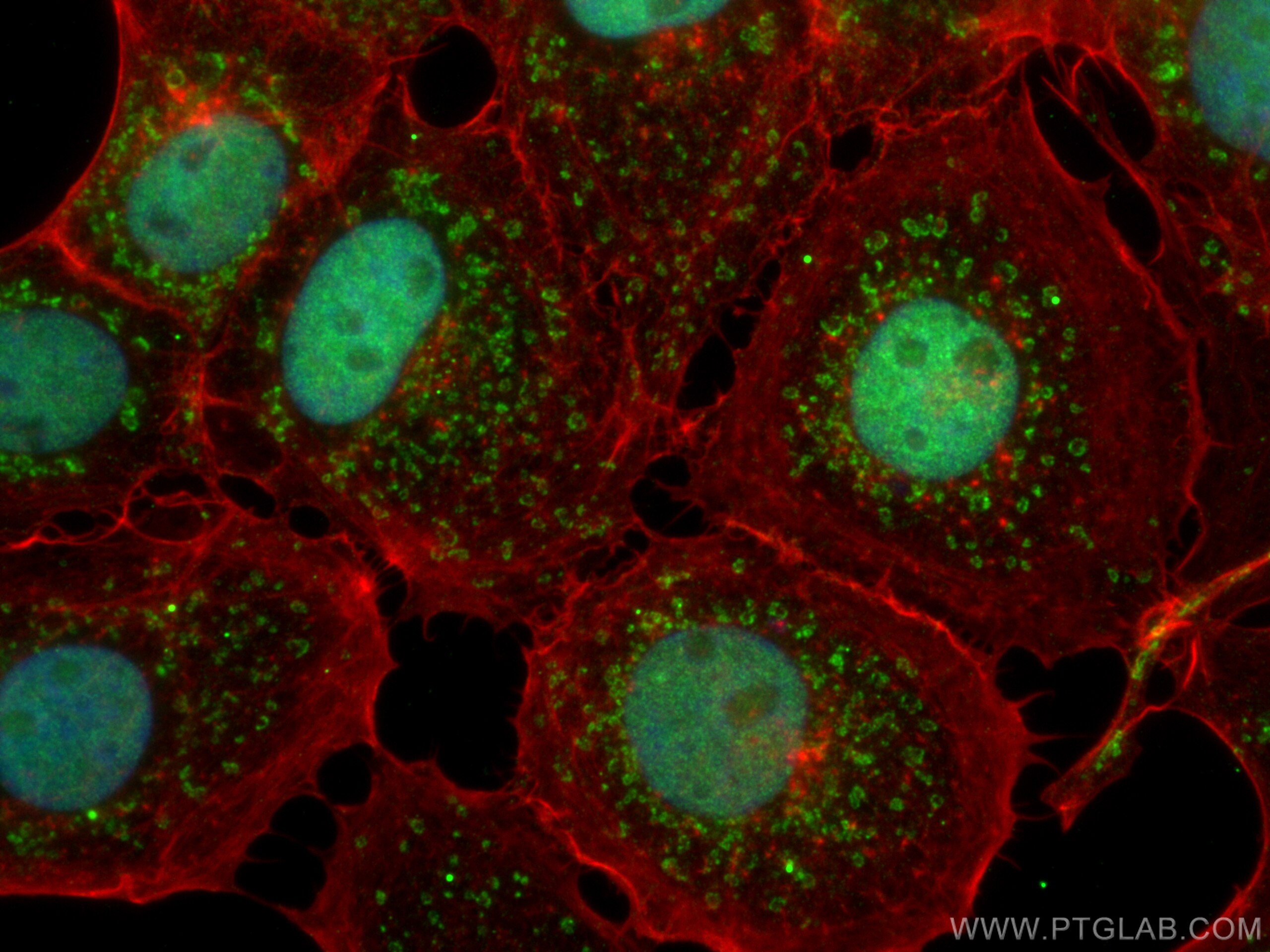Tested Applications
| Positive WB detected in | A431 cells, mouse liver tissue, rat brain tissue |
| Positive IF/ICC detected in | A431 cells |
Recommended dilution
| Application | Dilution |
|---|---|
| Western Blot (WB) | WB : 1:1000-1:4000 |
| Immunofluorescence (IF)/ICC | IF/ICC : 1:200-1:800 |
| It is recommended that this reagent should be titrated in each testing system to obtain optimal results. | |
| Sample-dependent, Check data in validation data gallery. | |
Product Information
30190-1-AP targets FATS in WB, IF/ICC, ELISA applications and shows reactivity with Human, mouse, rat samples.
| Tested Reactivity | Human, mouse, rat |
| Host / Isotype | Rabbit / IgG |
| Class | Polyclonal |
| Type | Antibody |
| Immunogen | FATS fusion protein Ag32956 Predict reactive species |
| Full Name | chromosome 10 open reading frame 90 |
| Calculated Molecular Weight | 78 kDa |
| Observed Molecular Weight | 67-77 kDa |
| GenBank Accession Number | NM_001004298.2 |
| Gene Symbol | FATS/C10orf90 |
| Gene ID (NCBI) | 118611 |
| RRID | AB_2935528 |
| Conjugate | Unconjugated |
| Form | Liquid |
| Purification Method | Antigen affinity purification |
| UNIPROT ID | Q96M02 |
| Storage Buffer | PBS with 0.02% sodium azide and 50% glycerol, pH 7.3. |
| Storage Conditions | Store at -20°C. Stable for one year after shipment. Aliquoting is unnecessary for -20oC storage. 20ul sizes contain 0.1% BSA. |
Background Information
FATS, also known as centrosomal protein C10orf90, bA422P15.2, belongs to a novel class of enzymes that acts as an E2-E3 hybrid enzyme for assembly of polyubiquitin chains. FATS is an E2-independent ubiquitin ligase that stabilizes p53 and promotes its activation in response to DNA damage (PMID: 24240685). FATS acts as a p53/TP53 activator by inhibiting MDM2 binding to p53/TP53 and stimulating non-proteolytic polyubiquitination of p53/TP53.
Protocols
| Product Specific Protocols | |
|---|---|
| WB protocol for FATS antibody 30190-1-AP | Download protocol |
| IF protocol for FATS antibody 30190-1-AP | Download protocol |
| Standard Protocols | |
|---|---|
| Click here to view our Standard Protocols |





